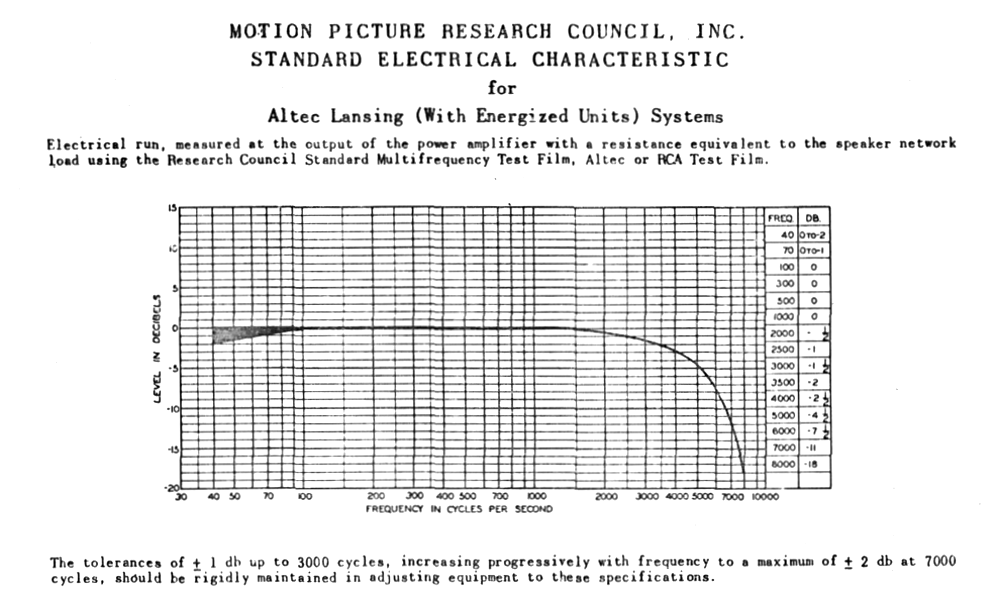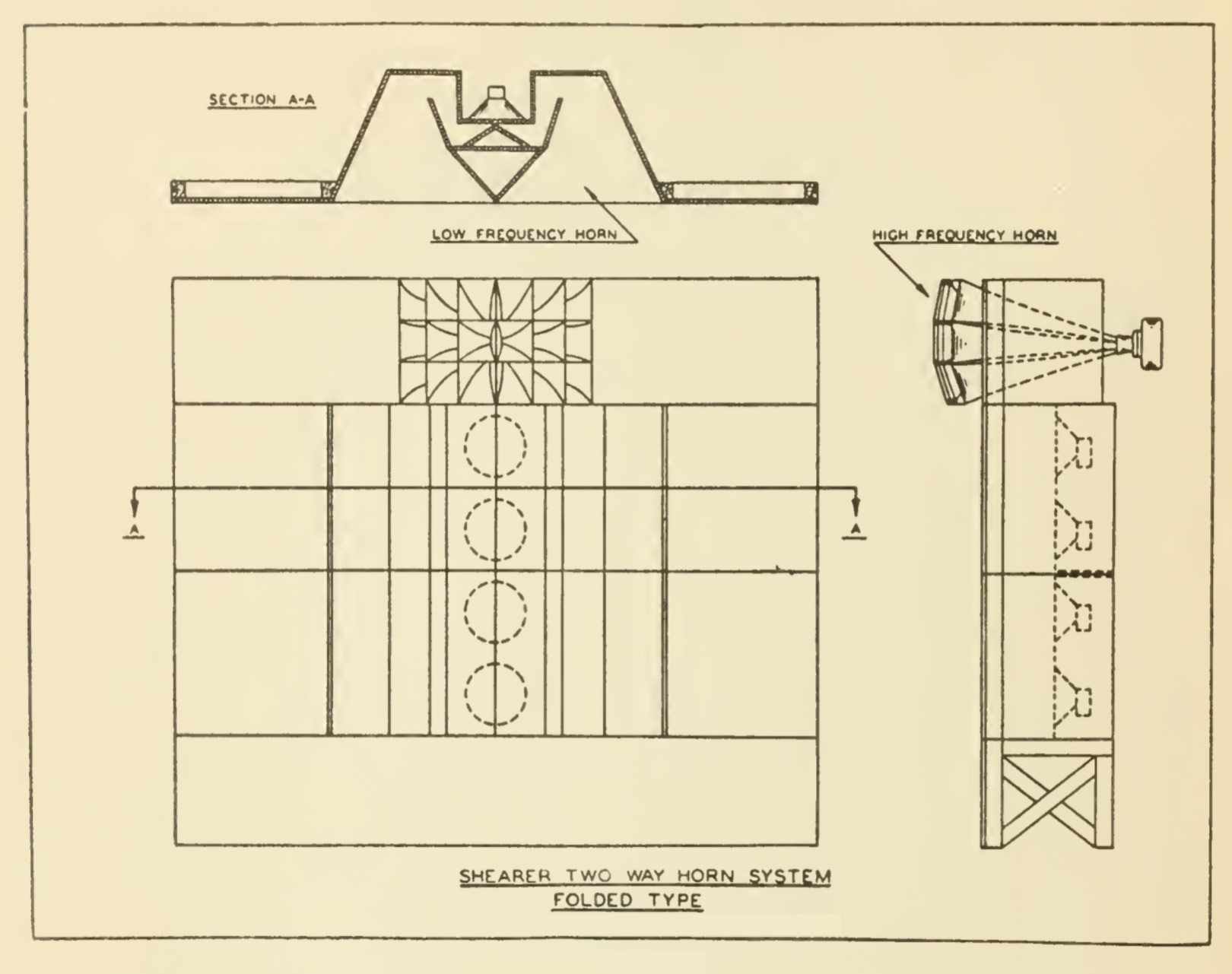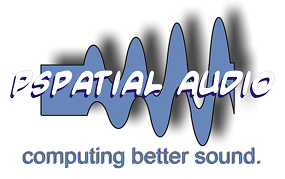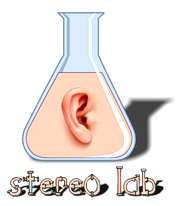
| This feature is due for release in Version 4.1 . |
Film sound
The Stereo Lab product offers support for analogue film soundtrack work.
The app’ offers various equalisation, noise reduction, and decoding options which are appropriate for film work. Historical explanations and justifications of the derivation of the various equalisations and decodes are given in the chapter Cinema Sound in the Needle-drop Handbook.
Film audio work has its own mode. The filters and decoders in this mode are the result of considerable research and "archaeology". They are unique to Stereo Lab.
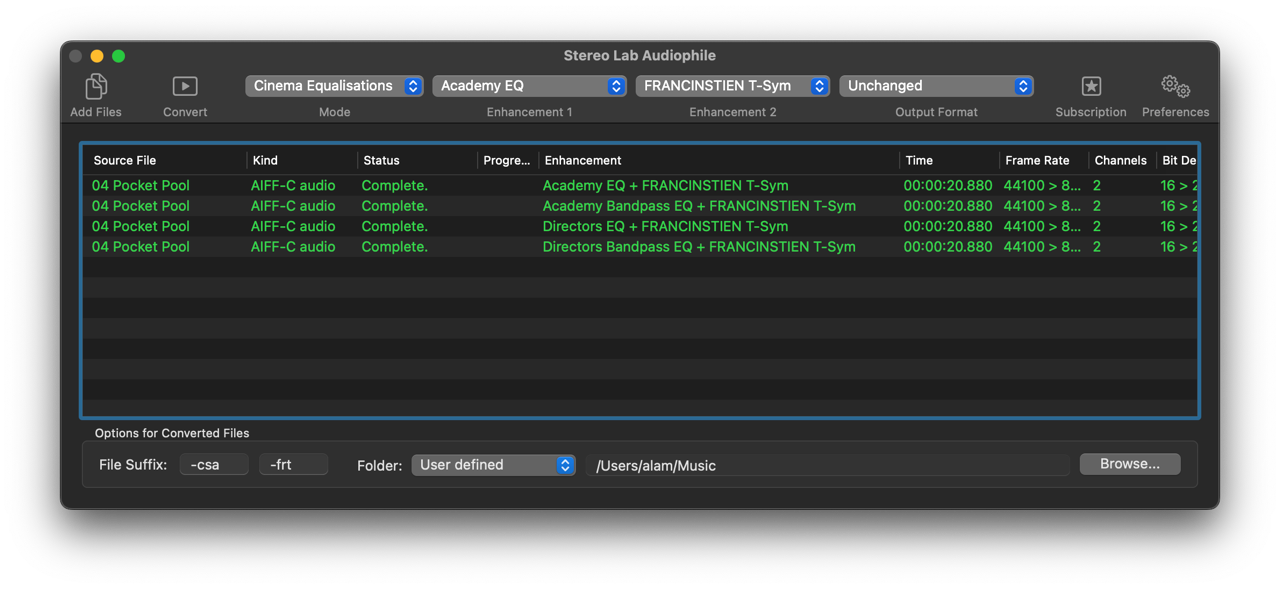
Filters include:
Academy
Use this equalisation (or Academy Bandpass) for all optical film soundtracks from the 1930s to the end of the 1960s - variable density, or variable area, negative or positive. Academy Bandpass will tidy up the bass end if that is required. See the Needle-drop Handbook.
Academy Bandpass
Use this equalisation (or Academy) for all optical film soundtracks from the 1930s to the end of the 1960s - variable density, or variable area, negative or positive. Academy Bandpass equalisation will tidy up the bass end by simulating the bass response of cinema loudspeakers of that period. If the mono soundtrack is “Perspecta stereophonic”, always use this equalisation. See the Needle-drop Handbook.
Directors'
Use this equalisation (or Directors' Bandpass) for magnetic soundtracks. We know now that the creative team experienced quite a different balance to their contemporary audience (who were largely still listening on old equipment). This de-emphasis emulates the average frequency response present on dubbing stages at the time. If the track contains low frequency “thumps” and “bumps”, as well as hum and other low frequency, mechanically derived noises, use the Directors' Bandpass equalisation. See the Needle-drop Handbook.
Directors' Bandpass
Use this equalisation (or Directors') for magnetic soundtracks. We know now that the creative team experienced quite a different balance to their contemporary audience (who were largely still listening on old equipment). This de-emphasis emulates the average response present on dubbing stages at the time. Unforeseen low frequency “thumps” and “bumps”, as well as hum and other low frequency, mechanically derived noises can beset magnetic tracks. This equalisation may be used to “tidy up” the low frequency noises a sound engineer might have missed in a European dubbing theatre or a commercial cinema of the time. See the Needle-drop Handbook.
Cinema Stereo 5.1 Decode
Use this process to decode Cinema Stereo soundtracks - Cat. 22 noise reduction and the cinema quadraphonic decode are combined. The Stereo track may be decoded into a 5.1 multitrack file, or stereo or mono stems. The LFE channel is partially loaded (in line with the LFE extension obtained by fitting the CN-160 optical bass extension card in Cinema Processors). No equalisation is applied to the main channels. See the Needle-drop Handbook.
Cinema Stereo 4.0 Decode
Use this process to decode Cinema Stereo soundtracks - Cat.22 noise reduction and quadraphonic decodes are combined. The Stereo track may be decoded into a 4.0 multitrack file or stereo or mono stems. The LFE channel is not loaded and will be silent. No equalisation is applied to the main channels. See the Needle-drop Handbook.
Cinema SR 5.1 Decode
Use this process to decode Cinema SR soundtracks - noise reduction and the cinema quadraphonic decode are combined. The Stereo track may be decoded into a 5.1 multitrack file, or stereo or mono stems. The LFE channel is partially loaded (in line with the LFE extension obtained by fitting the CN-160 optical bass extension card in Cinema Processors). No equalisation is applied to the main channels. See the Needle-drop Handbook.
Cinema SR 4.0 Decode
Use this process to decode Cinema Stereo soundtracks - noise reduction and quadraphonic decodes are combined. The Stereo track may be decoded into a 4.0 multitrack file or stereo or mono stems. The LFE channel is not loaded and will be silent. No equalisation is applied to the main channels. See the Needle-drop Handbook.
